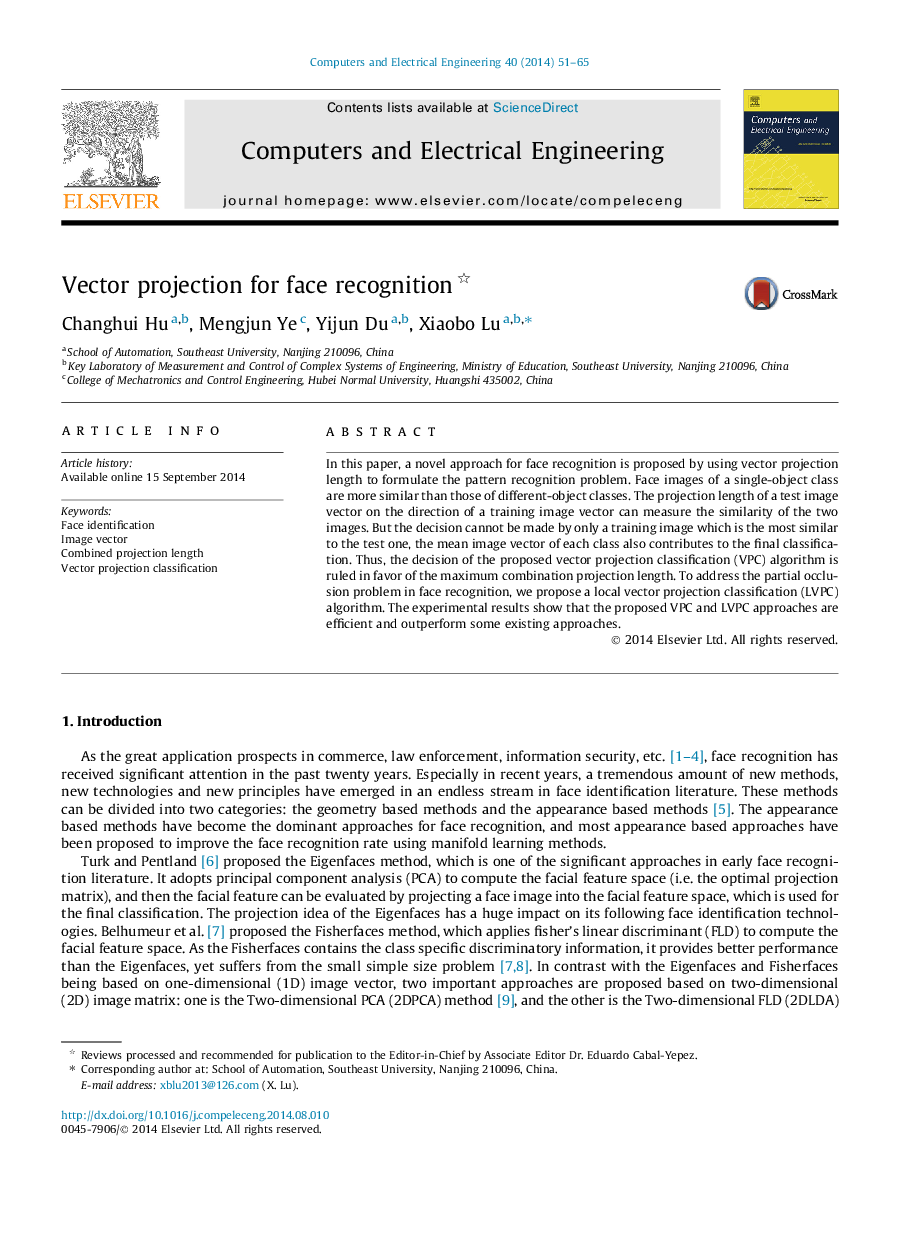| Article ID | Journal | Published Year | Pages | File Type |
|---|---|---|---|---|
| 455337 | Computers & Electrical Engineering | 2014 | 15 Pages |
•The vector projection length can measure the similarity of two face image vectors.•Two projection lengths are combined to make the final classification for face recognition.•The projection length between a test image and a training image is the main similarity metric.•The projection length between a test image and a class mean is secondary but useful.•High dimensionality face images can be directly used to compute their similarities.
In this paper, a novel approach for face recognition is proposed by using vector projection length to formulate the pattern recognition problem. Face images of a single-object class are more similar than those of different-object classes. The projection length of a test image vector on the direction of a training image vector can measure the similarity of the two images. But the decision cannot be made by only a training image which is the most similar to the test one, the mean image vector of each class also contributes to the final classification. Thus, the decision of the proposed vector projection classification (VPC) algorithm is ruled in favor of the maximum combination projection length. To address the partial occlusion problem in face recognition, we propose a local vector projection classification (LVPC) algorithm. The experimental results show that the proposed VPC and LVPC approaches are efficient and outperform some existing approaches.
Graphical abstractFigure optionsDownload full-size imageDownload as PowerPoint slide
